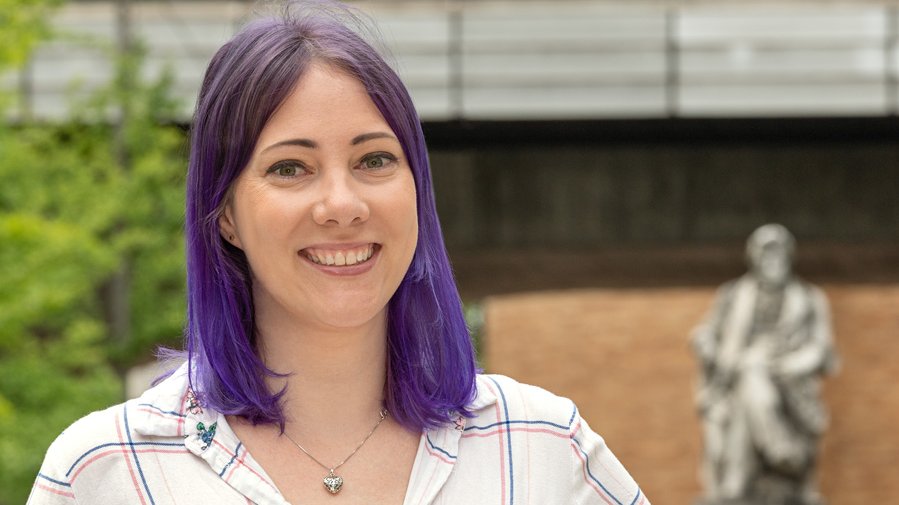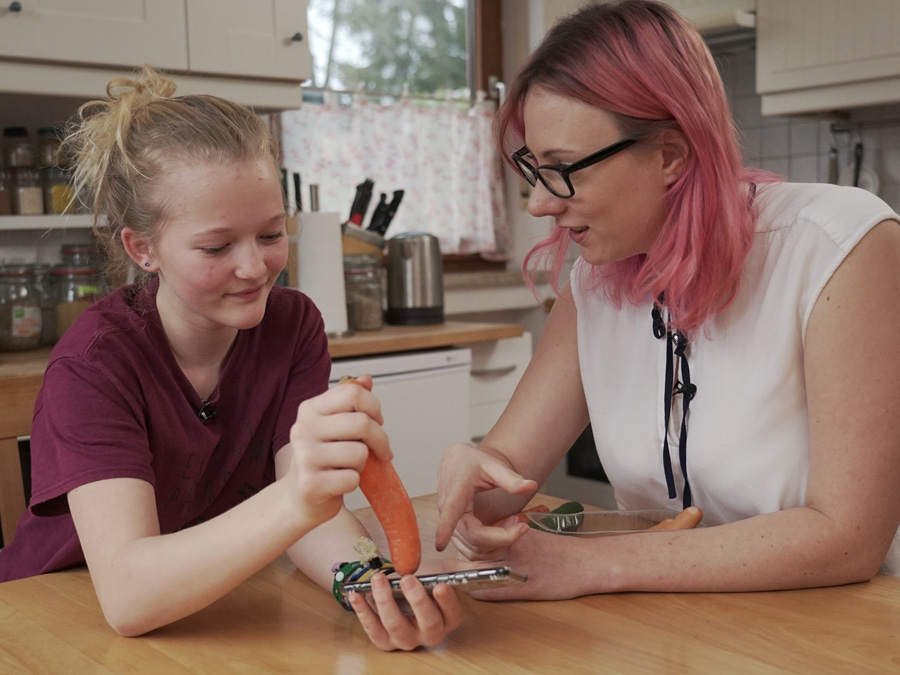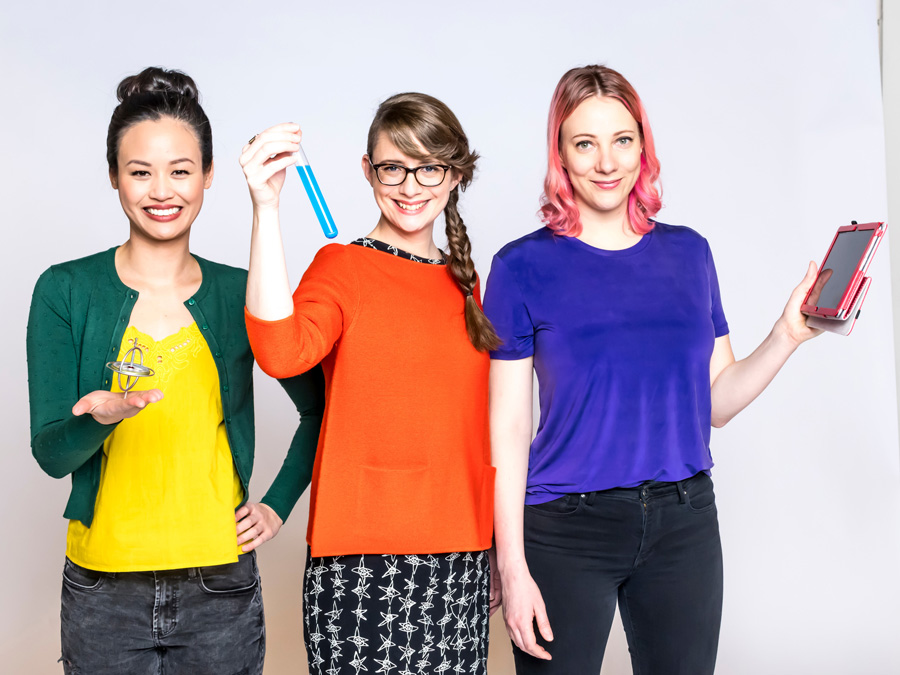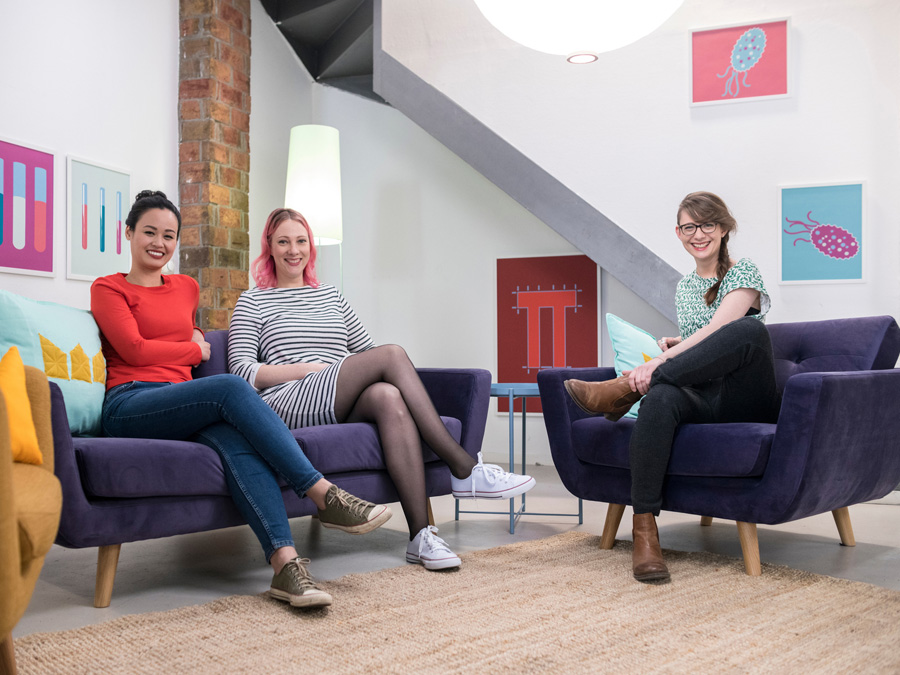Johanna Baehr, Princess of Science
Straighten your little crown and continue your research!

Johanna, "Princess of Science" can be seen on KIKA every Saturday, and it is also available in the ZDF media library. What was the response to the series so far?
Johanna Baehr: An evaluation from the ZDF regarding audience ratings and click-counts is still to come. The reactions from my environment are very positive. For example, friends told me that they could still learn new things, for example how to use the "night mode" on their mobile phones.
And your colleagues at the chair?
They like the series. Actually, we had planned to watch the first episode together, but we couldn't, unfortunately, because of the coronavirus. We watched it via a Meet-conference. My colleagues find the topics exciting, especially because it is often about technology, not only "Math" and "Physics". Here and there, they were of the opinion that one could have gone more into depth.
The target group is a little younger. Each episode starts with a question from girls aged 12 to 16. How did the topics come about?
When my co-presenters Linh Nguyen and Patrizia Thoma and I joined, some of the topics were already decided on, as the girls had brought them along – but we were also able to contribute quite a lot of ideas ourselves, and we thought about how we could implement them together. For example, we reworked large parts of the episode on mobile phones because I was there as an e-technician. Together, we unscrewed a phone and took a look inside – and we clarified why it always ends up on its "face" when it falls down, and whether you can swipe with a sausage.
The episodes of the first season are about the topics of mobile phones, fashion, sports, animals, dance & music, color, cosmetics, and the kitchen. Was it possible to shoot during the corona-lockdown?
The shooting was completed in March, just before the corona lockdown. It took a few months, all in all, and I managed to get it done alongside my normal work here at the chair quite well. We shot some of it at the girls' homes, and other parts in the studio or outside. My first shoot, for example, was on a training ground for sniffer dogs. We explained why a person can distinguish 10,000 smells, but dogs about 1 million.
Your tomcat Emil was involved as well.
Yes, I brought along my two tomcats for the episode on animals – Emil and Anton, who are inseparable. Originally, Anton was supposed to be in front of the camera as well, but he is black and could only be seen in outline in the film, so he had to wait in the dressing room. Emil did the shooting alone.
The cat brought you to the exciting field of bionics.
For the episode, I skyped with Dr. Alexis Noel from Georgia Tech, who conducts research on the hollow papillae on cat's tongues. Based on the example of the papillae, she is working on a hairbrush for astronauts.
You are a scientist, not a presenter… did you have any training before?
Not at all. However, it was very beneficial for me that I have been teaching for a few years. I give a lecture together with a practical course for our Bachelor students. During the shoot, we could rely on a lot of support from the team. We were given the scripts before the shoot, but were then allowed to speak very freely and use our own words. As I usually speak very fast, I often had to slow down.
Speaking to the camera is different from speaking in front of students...
What was really unusual for me is that each take was shot three or four times from different perspectives. We were supposed to do the same scene several times, as consistent as possible.
Where does your enthusiasm for the STEM-topics come from?
I grew up in a family of researchers. My parents are both biologists. My mother is an expert on spiders, my father on beetles. I could always ask my father anything. He knew just about EVERYTHING, and if not, he developed creative theories. Thus, I got an idea on how to approach science quite early on. At school, I had a brilliant math and physics teacher who inspired me.
What do you want to get across in "Princess of Science"?
Our goal is to get young people, especially girls, to want to question what is going on in their own environment. How much science is there in everyday life? Ask yourself questions and, above all, find out how to get the answers! Everyone can do experiments in everyday life. And if something goes wrong… just straighten your little crown and carry on researching! "Krönchen geraderücken und weiterforschen" is the final sentence in every episode.
Will there be a second season?
I hope so! I'd be there without second thoughts! I already have a list with new topics in my head. Women should talk about science and get other women excited about it. There are not enough women in science!
(Interview: Verena Meinecke)
Johanna Baehr (30) lived in Australia for many years and has two citizenships. At TUM, she is currently working on her doctorate at the Faculty of Electrical Engineering and Information Technology, focusing on the topic of chip security. Teaching girls the fun of STEM-topics has long been a matter of concern to her. In “Mädchen Machen Technik”, for example, she teaches girls how to program an alarm system. To the TV series: Princess of Science in the ZDF media library


